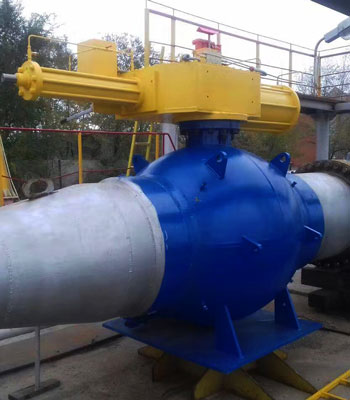Valves are omnipresent. They come in various sizes, shapes and types and hold a highly advantageous position in many industrial set-ups as well as commercial and domestic scenarios. Of the many valves that are available today, the butterfly valve and gate valve are some of the most popular and widely-used models.
This article exclusively explores the huge differences between both valve types to help us understand why both are equally important for industrial and commercial use.
We commence by defining the two types of valves.
The Gate Valve:
The gate valve, also known as a sluice valve, is characterised by a rectangular or round gate that regulates the flow of medium in a pipeline. The gate moves perpendicular to the flow of the medium, thus allowing a uniform, linear flow. The gate valve is also designed to complete the medium flow in such a way that no residues are left behind in the pipelines or inside the valve.
The Butterfly Valve:
The butterfly valve or flap valve's main characteristic part is the disc which is controlled by a stem to open and close the valve. Butterfly valves can be opened at any angle to allow partial or full flow of media. They can also isolate particles in the media during the flow. However, unlike gate valves, they leave residual matters inside the pipeline.

The structural design:
As mentioned earlier, the gate valve has a rectangular or round-shaped wedge, and the butterfly valve has a circular flap-like disc. However, increased demand for both valves has been the driving force behind manufacturers coming up with various structural designs for both valves.
Also Read : What Are Butterfly Valves?
The structural designs in gate valves include:
Butterfly valves are available in the following structural designs:
How they operate:
Butterfly valve:
The butterfly valve has a handle or an actuator that is used to turn on and turn off the valve. When in operation, the handle is turned manually, electrically or pneumatically to a quarter turn. The stem that bridges the handle and the disc turns the disc to a position parallel to the centreline. When the handle is closed, the disc is perpendicular to the centreline and fuses with the seat inside the valve's body to effectively seal off the flow.
The butterfly valve's thickness creates a natural resistance that obstructs the medium flow and causes a drop in the valve pressure even when the disc is fully opened.
Gate Valve:
The gate valve operates by opening and closing a movable door or gate, which is controlled by a threaded screw. Unlike the butterfly valve, the door in a gate valve opens and closes completely, thus providing an unobstructed flow of media. But the mechanism is slower than that of the butterfly valve due to its high opening height.
Applications:
Butterfly valves:
Butterfly valves are some of the most widely used and preferred valves. Their industrial applications include:
Gate Valves:
Gate valves are built to withstand high pressures, but they cannot regulate or throttle the flow of media. They are commonly used in applications that require unrestricted flow, such as:
Pros and Cons:
Butterfly valve: The pros
The cons:
The Gate valve: The Pros:
The cons:
Oilway, Indonesia's leading industrial valve suppliers, offer high-quality butterfly valves and gate valves in various choices. Our high-performance valves are available in different end-type connections, materials, seat, and disc designs. Contact us @+86-21-69891289 for further details about our products.

